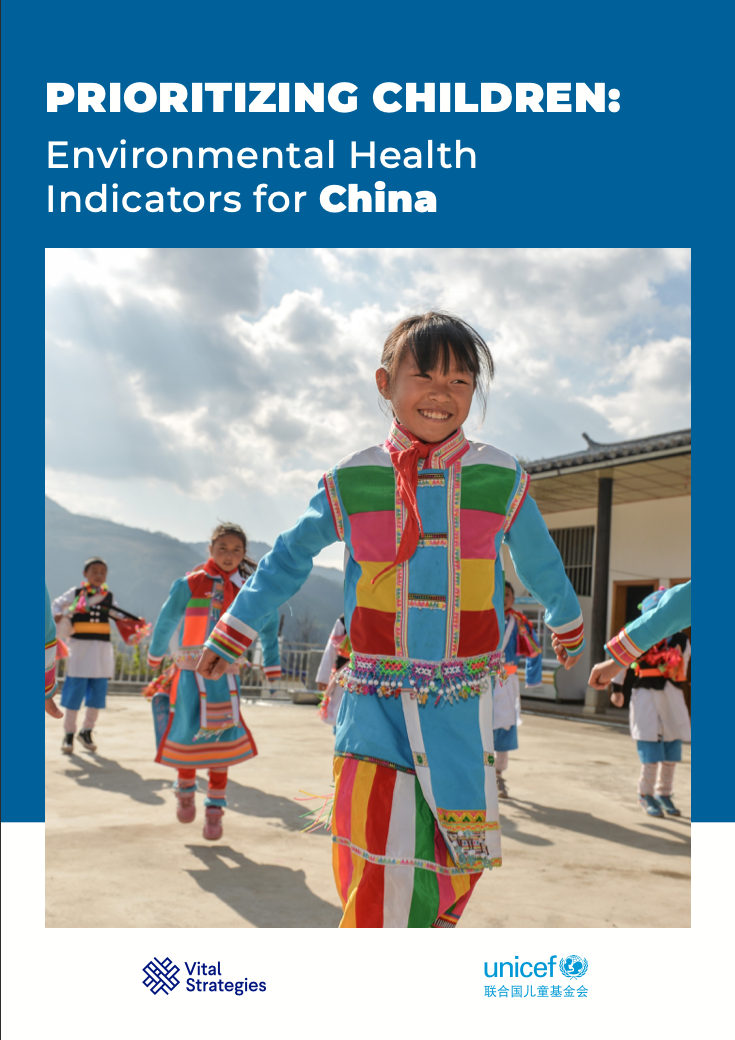A critical first step toward providing a safer and healthier environment for children
Globally, more than one in four childhood deaths under the age of five are attributable to unhealthy environments. Indicators that systematically track, assess and report on the risks and impact of the environment on children’s health can be used to:
- Quantify the magnitude of a public health problem
- Detect notable trends in environmental exposures and health outcomes
- Identify subpopulations at risk of environmentally attributable illnesses
- Generate hypotheses about the relationship between health and the environment
- Direct and evaluate measures for control and prevention
- Facilitate the development of evidence-based policies
Researchers increasingly use children’s environmental health indicators (CEHIs) to link environmental factors and adverse children’s health outcomes. In this report, we identify some of the most important children’s environmental health indicators for China, based on a rigorous methodology and process. We also provide more detail on environmental risk factors that are potential hazards of children’s health in China: climate change, air pollution, industrial waste pollution, the built environment, environmental tobacco smoke and food safety.
The CEHI project represents a critical first step toward providing a safer and healthier environment for children in China. It must be followed by efforts to ensure that routinely collected, high-quality data to support each indicator can be captured, analyzed and shared with relevant stakeholders to guide policy that benefits children’s health.
Published: August 31, 2022
Sign up to receive our monthly Research Roundup email, which offers a selection of new public health research from major journals.
Recent Abstracts
Effects of Heat on Early Childhood Development
Blood Lead Surveillance of Children and Pregnant Women in Tamil Nadu, India
Sportswashing through Media: Coca-Cola’s Olympic Play – A Research Report
What’s in Our Food?
Mais Dados Mais Saúde
More Data, Better Health – Primary Health Care
Mais Dados Mais Saúde: Experiência De Discriminação Cotidiana Pela População Brasileira
More Data, Better Health – Experience of everyday Discrimination by the Brazilian population
Monitoramento de Estratégias pelo Fim da Violência contra Crianças e Adolescentes
Harm Reduction: The Neglected Pillar of US Drug Policy
